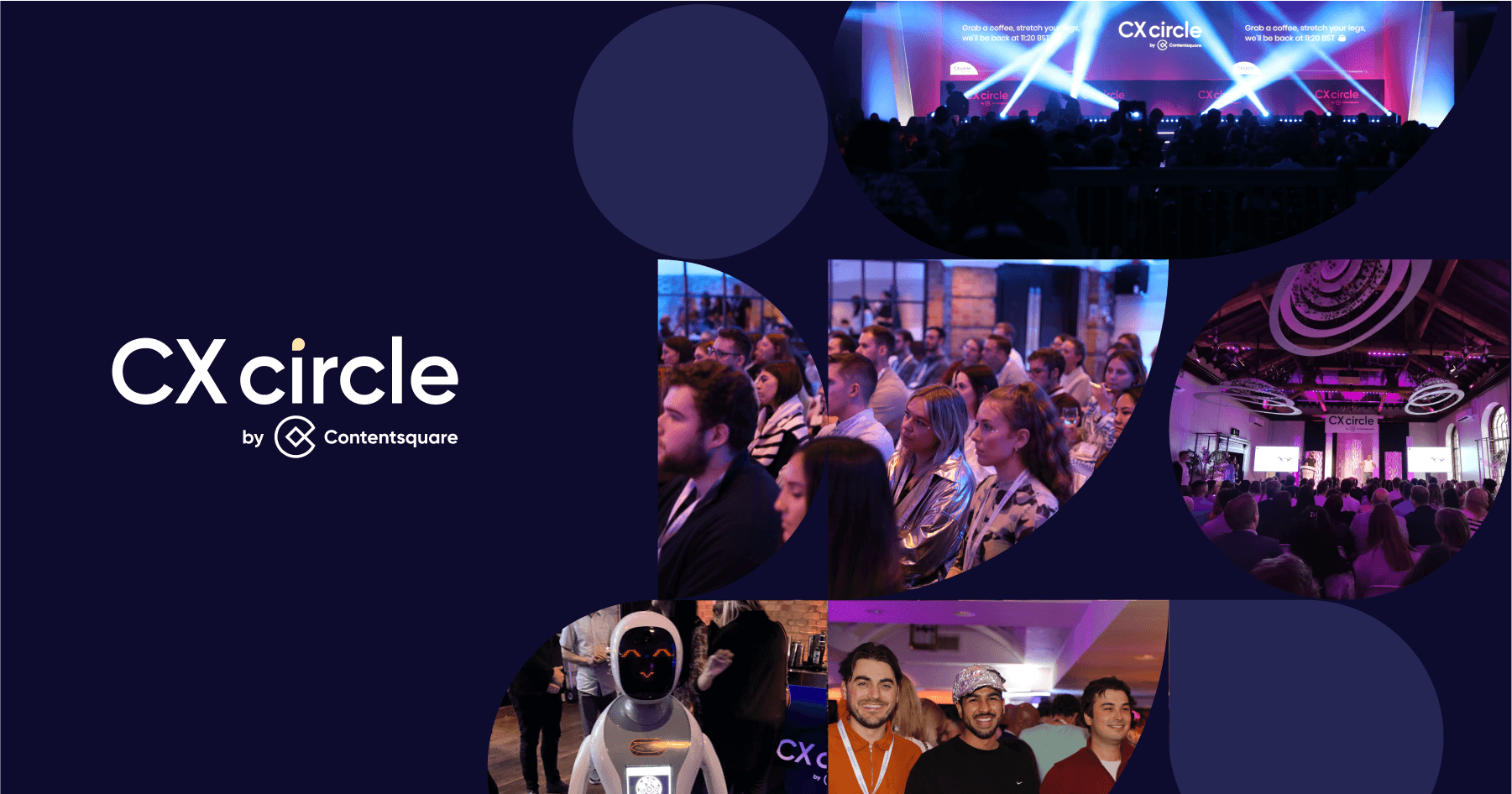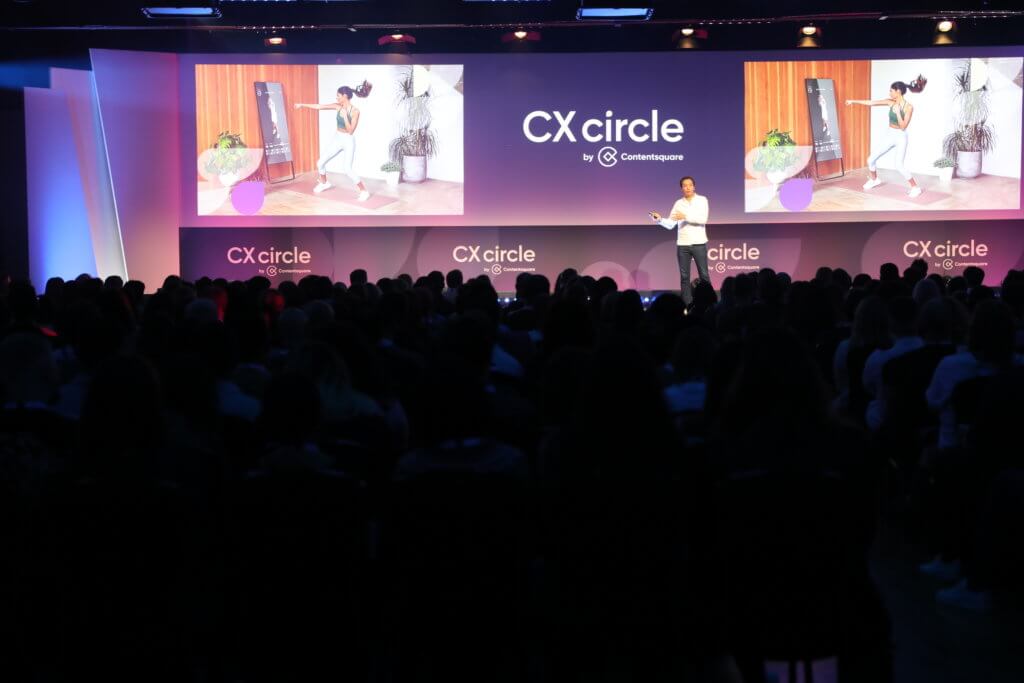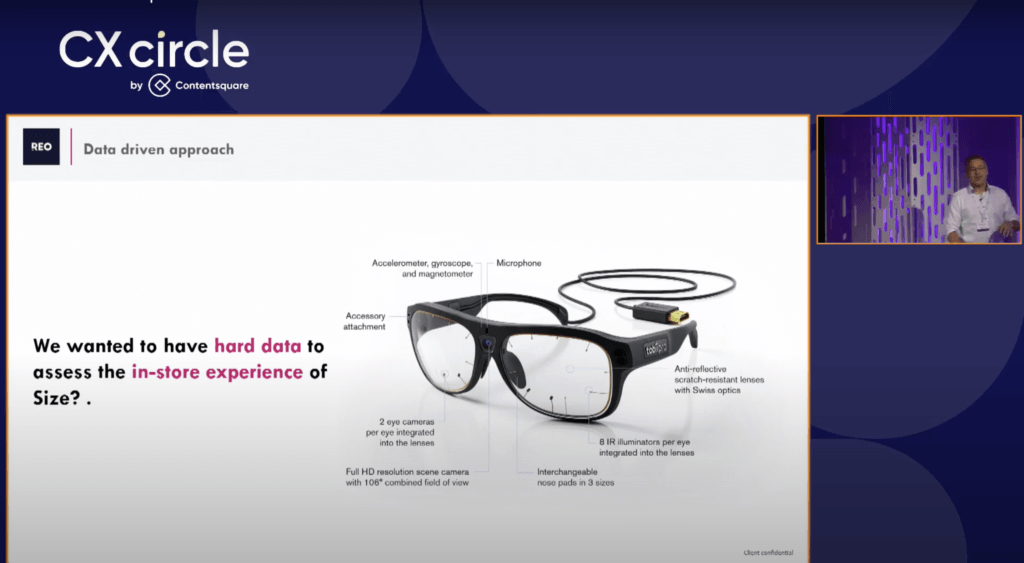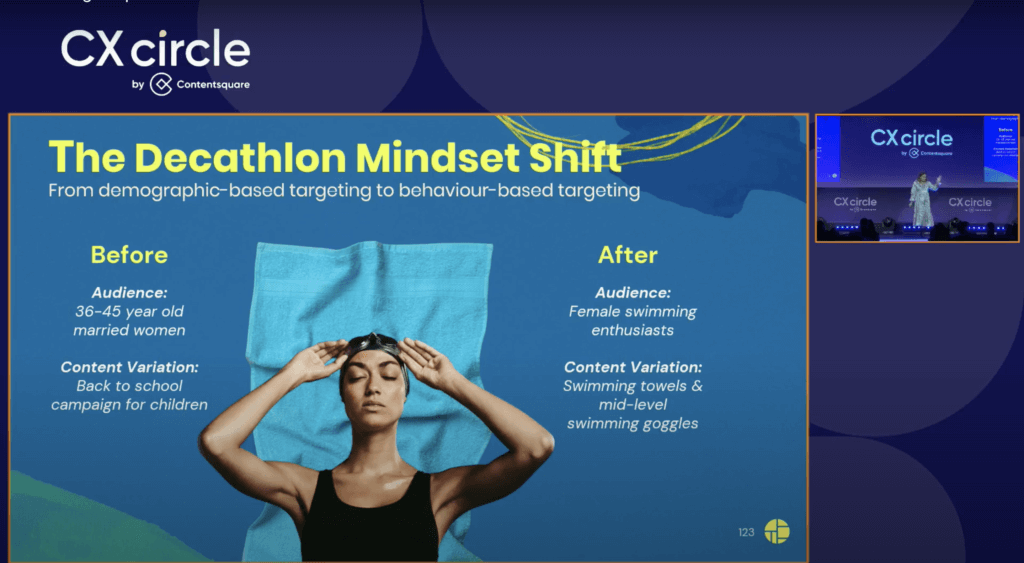
2024 Digital CX Trends
Discover ten trends and what you can do to prepare your business for 2024—and beyond.

According to Nasdaq, nearly every shopping purchase (95%) will happen online by 2040. This doesn’t surprise us as this shift in consumer shopping habits is already well underway. Brands are now under more pressure than ever before to provide customers with rewarding, seamless and memorable digital customer experiences.
And despite the economic crisis, more than 65% of companies say they are increasing CX spending in 2023, by an average of 24%. This was evident at our recent CX circle event in London. During an advice-packed day, we heard from leading brands like DICE, size?, Lovehoney on how they’re future-proofing their strategies and what they think will be the biggest trends in CX in the near future.
From immersive experiences to experimentation, here are eight of the top customer experience trends from CX circle London…

2024 Digital CX Trends
Discover ten trends and what you can do to prepare your business for 2024—and beyond.
Gary Roth, Director of Business Value Engineering at Contentsquare, believes that in the next five years digital customer experiences will become more human. He predicts three ways in which this will happen.
Though platforms like social commerce, we’re going to move away from convenience to experiences that are entertaining, shared and live. With social commerce already representing 14% of China’s total eCommerce sales, Gary predicts it’ll only continue to grow especially among Gen Z consumers. “It removes a lot of friction, creates a lot of engagement and drives a lot of revenue. It’s not a surprise that social commerce is gaining so much traction,” says Gary.
According to Gary, “In the next five years, it’ll not only be about customer journeys, it’ll be about life journeys.” He gives the example of Lululemon acquiring Mirror, an in-home smart fitness mirror. By combining the two products Gary explains, “they’re going from an internally-centered strategy to a more customer-centered strategy, thus creating positive change in the lives of their customers.”
Gary believes that, “virtual reality and augmented reality will get widespread adoption.” Many retail websites and services are already offering customers the chance to see products from different angles. Brands will start to implement technologies enabling customer to interact with products online. “We’ll even be able to virtually try it on our virtual avatars to see how it would look us,” says Gary.

James Watkins, Head of Digital at size?, shares that brands will need to bridge the gap between in-store and online to create seamless omnichannel experiences.
James points out that understanding customer experience online is easy, but in-store it’s a different story. In the past, customer research was often done using mystery shoppers, but the data wasn’t quantifiable or accurate. To solve this data gap, size? has started using Google Lens eye-tracking technology. Eye tracking technology helps them capture viewing behavior in-store, providing them with hard data to assess the offline customer experience.
“Size is a community-driven brand,” explains James. “To be community-driven, you need to review what you do and where. What better way to do this than to see what a customer does as soon as they walk into your store to the moment they walk out? No opinions, just facts.”

Falko Mortiboys, VP Fan Experience at DICE, believes the experience brands provide will become as important as their products and services. Consumers want brands to anticipate their unique needs and expectations, demonstrate empathy and deliver a personalized experience while remaining uncomplicated and enjoyable to use. As Falko explains, “The centerpiece of customer experience needs to be the relationship a company can create with their users.”
Therefore, companies need to understand the consumer holistically. Using a broad range of skill sets and methodologies, they must go beyond monitoring what users do to also look at what they think and how they feel. Understanding the behavioral, attitudinal and emotional side of customer experience will evolve CX to a company-wide mandate with shared responsibilities across the business to foster strong and lasting relationships with consumers.

For Mark Adams, VP of Innovation at VICE, the biggest customer experience trend we’ll see sweeping across the industry is a return to ‘first principles’. According to Mark, “The digital environment we live in is so mindbogglingly complicated now it’s impossible to keep up with, let alone make sense of the different threads of innovation.”
To counteract this, Mark argues brands must get back to a basic foundational understanding of the nature of digital systems. “At its heart, the internet remains an interconnected set of networks,” he explains. “It seems basic to say it, but once you remember this, you can start to question whether your strategy works for those networks—does it identify and activate them how you want it to?“
Zoe Allen, CRO and Personalization Lead at Decathlon, spoke about businesses taking a behavior-based approach to future-proof personalization and putting customer motivations at the forefront.
“The way most brands are segmenting their audiences online is obsolete,” says Zoe. She believes we need to go beyond demographics to improve the customer experience for the average user.
“The problem is there’s no such thing as an average user,” says Zoe. So, when it comes to segmenting, businesses should look at audience behavior, not their attributes. We need to deep dive into our customers’ likes, dislikes, influences and the life experiences that are unique to them. “Because our demographics don’t define who we are; our actions do.”

Typically, experimentation and testing are owned by one department and used to increase conversion rate. However, Natasha Senior, Senior Digital Manager at Sky, says it will be integrated and owned across the entire business. “Experimentation is not just one business area; it’s the whole business culture.”
Sky has already started implementing this strategy, using experimentation to improve the performance across different teams. For example, in their operations team to reduce calls into the contact centers. “It’s not just about improving your baseline. It’s also about learning,” says Natasha.
Steward Ehoff, Head of Experimentation RS Components, also adds that the adoption of experimentation will continue to grow. “Businesses are starting to realize that opinions aren’t cutting it anymore.”
“I’ve seen significant growth in the software and agency space which will only continue. One day experimentation will be on the same level as SEO, where you just have to do it—you won’t be able to build products, services or solutions any other way,” says Steward.

According to Rob Sleath, Optimization Manager at Lovehoney, we are heading back in the direction where big brands will become boutiques again.
“In the early days, your purchasing experience was artisan, bespoke and personal when you walked into a shop. But thanks to mass production, large retailers taking over and the internet, there’s a disconnect between customers and sellers. The experience is becoming more transactional,” says Rob.
In this transactional landscape, he believes it’s time for product experts and personal experiences to re-emerge. “We think there is an opportunity for category expert retailers, who know their category and catalog inside-out.” Expert retailers will be focused on providing more human experiences online ensuring a bespoke, personalized service, “They don’t just treat customers as traffic to convert. They treat them as people,” Rob explains.

Daisy Morris is a social media strategist and the founder of the social media consultancy and digital community, The Selfhood.
For Daisy, the coming years will be defined by employees evolving into brand ambassadors and content creators as they continue to grow their personal brands. From LinkedIn to TikTok, we see this happening rapidly as it helps brands create more of a personal feel on their channels.
Daisy also spoke about the power of creative confidence. According to a recent study by IBM, the most sought-after characteristic in leaders today is creativity. Daisy believes creative confidence is the key to success in both your personal and business life. “Your creative thinking, ability to innovate and think differently isn’t just going to benefit your work, it’s going to benefit the people around you,” she says.
To learn more about how leading brands envision the future of the human digital experience, download our Future 23: CX Predictions for 2023 and Beyond eBook.
2024 Digital CX Trends
Discover ten trends and what you can do to prepare your business for 2024—and beyond.

